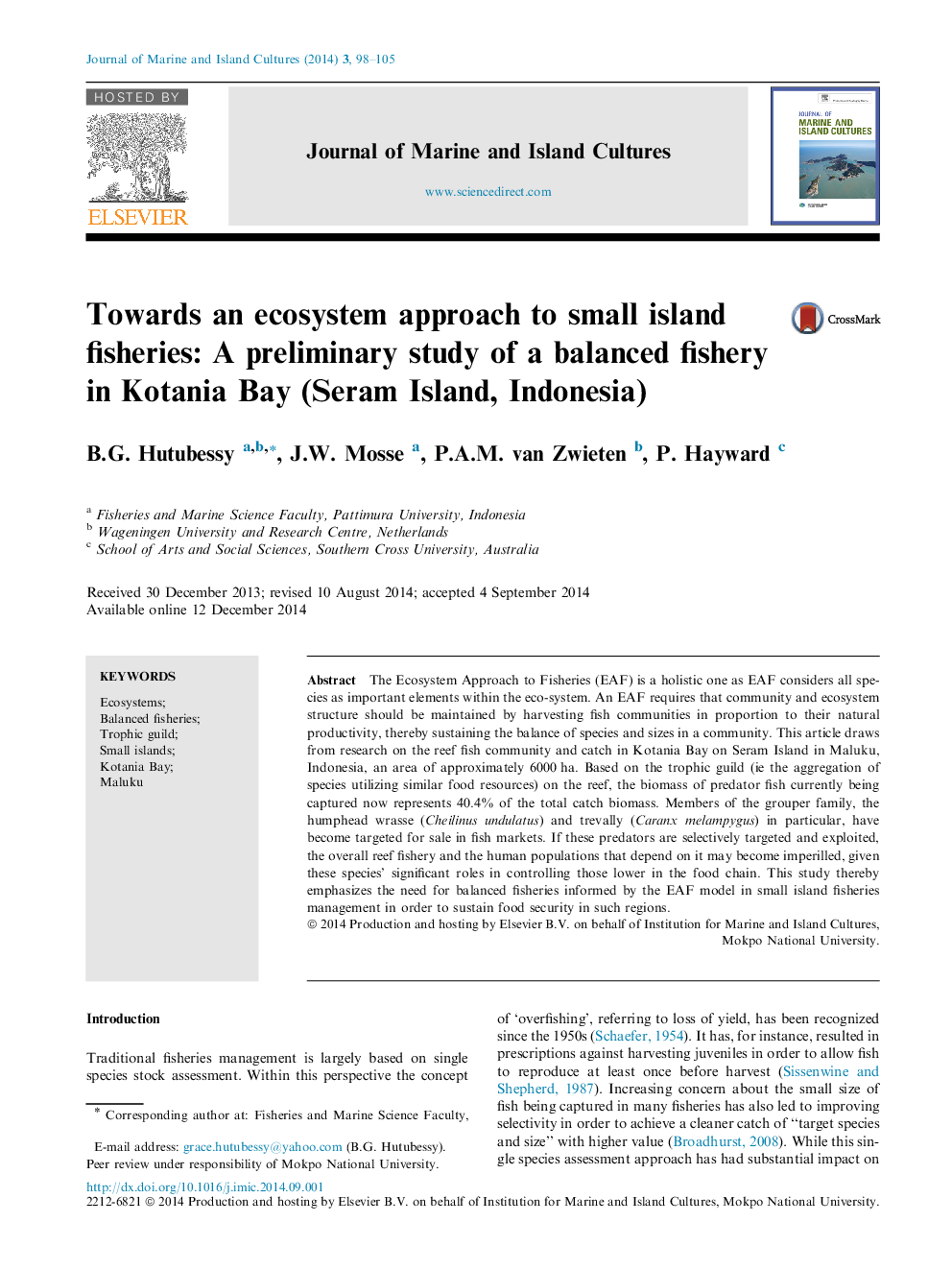| Article ID | Journal | Published Year | Pages | File Type |
|---|---|---|---|---|
| 1107057 | Journal of Marine and Island Cultures | 2014 | 8 Pages |
The Ecosystem Approach to Fisheries (EAF) is a holistic one as EAF considers all species as important elements within the eco-system. An EAF requires that community and ecosystem structure should be maintained by harvesting fish communities in proportion to their natural productivity, thereby sustaining the balance of species and sizes in a community. This article draws from research on the reef fish community and catch in Kotania Bay on Seram Island in Maluku, Indonesia, an area of approximately 6000 ha. Based on the trophic guild (ie the aggregation of species utilizing similar food resources) on the reef, the biomass of predator fish currently being captured now represents 40.4% of the total catch biomass. Members of the grouper family, the humphead wrasse (Cheilinus undulatus) and trevally (Caranx melampygus) in particular, have become targeted for sale in fish markets. If these predators are selectively targeted and exploited, the overall reef fishery and the human populations that depend on it may become imperilled, given these species’ significant roles in controlling those lower in the food chain. This study thereby emphasizes the need for balanced fisheries informed by the EAF model in small island fisheries management in order to sustain food security in such regions.
